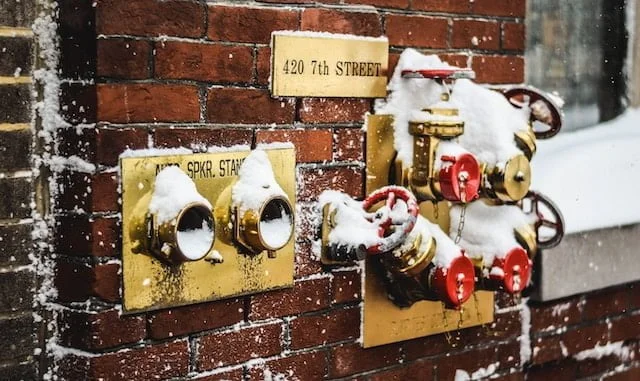
Nestled in the heart of a charming New England region, Bedford, a picturesque town, offers a serene escape from the hustle and bustle of city life. As the winter season arrives in Bedford, so does the potential for frozen pipes, a common and inconvenient plumbing issue that many homeowners face. Reach out to Bedford plumbing services to understand the unique challenges posed by the town’s climate during the winter months. Frozen pipes can lead to burst pipes, water damage, and costly repairs. However, with some preventive measures and knowing how to thaw frozen pipes when the need arises, you can avoid these winter plumbing nightmares. This article explores effective strategies to prevent frozen pipes and provide step-by-step guidance on thawing them if they do freeze.
Table of Contents
Understanding the Causes of Frozen Pipes:
Before diving into prevention and solutions, it’s important to understand why pipes freeze in the first place. Cold temperatures are the main culprit, but other factors can contribute to the problem. Here are some key causes:
1.1. Cold Weather: When the temperature drops below freezing, water inside your pipes can freeze, causing blockages and pressure buildup.
1.2. Poor Insulation: Insufficient insulation in walls, attics, and crawl spaces can leave pipes vulnerable to freezing.
1.3. Exterior Gaps: Cracks and gaps in your home’s exterior can allow cold air to reach your plumbing.
Preventive Measures:
Preventing frozen pipes is far easier than dealing with the aftermath. Here are some practical steps to keep your pipes from freezing during the winter months:
2.1. Insulate Your Pipes: Add insulation to vulnerable pipes, especially those located in unheated areas like basements, crawl spaces, and attics.
2.2. Seal Gaps and Cracks: Seal any gaps or cracks in your home’s exterior to prevent cold air from infiltrating and freezing your pipes.
2.3. Maintain Adequate Heating: Keep your home adequately heated during cold spells to maintain a consistent temperature throughout your property.
2.4. Drip Faucets: On especially cold nights, allow faucets to drip slowly; this can help relieve pressure in the pipes and reduce the risk of freezing.
Thawing Frozen Pipes:
Despite your best efforts, pipes can still freeze. When this happens, it’s essential to act quickly to prevent further damage. Here’s how to thaw frozen pipes:
3.1. Locate the Frozen Section: Determine which section of the pipe is frozen. Look for frost or bulges in the pipe, or use a non-contact thermometer to identify the coldest areas.
3.2. Turn Off Water Supply: Shut off the main water supply to your home to prevent water from flowing into the frozen section and causing a burst.
3.3. Apply Heat: Gently warm the frozen pipe using a hair dryer, heat lamp, electric heating pad, or a towel soaked in hot water. Start at the end nearest to the faucet and work your way towards the frozen area.
3.4. Never Use Open Flames: Avoid using open flames or torches to thaw pipes, as this can be dangerous and cause damage.
3.5. Thawing with a Pipe Thawing Machine: If you have access to a pipe thawing machine, follow the manufacturer’s instructions for safe and effective thawing.
When to Call a Professional:
In some cases, frozen pipes may be located in hard-to-reach or hidden areas, or the situation may become too complicated to handle on your own. Here are some signs that it’s time to call a professional plumber:
4.1. Multiple Frozen Pipes: If you have multiple frozen pipes throughout your home, it’s best to consult a plumber for a comprehensive assessment.
4.2. Burst Pipes: If a pipe has already burst due to freezing, a plumber can quickly address the issue and make necessary repairs.
4.3. Inaccessible Pipes: If the frozen pipes are difficult to reach or located in confined spaces, a professional can safely handle the situation.
Conclusion:
Frozen pipes can be a significant headache during the winter season, but with proper preventive measures and the knowledge of how to thaw them, you can avoid the worst of the plumbing problems associated with cold weather. Remember to insulate, seal, and maintain your pipes to keep them from freezing, and in case of a freeze, follow the steps outlined in this article to safely thaw them. When in doubt or when faced with a complex situation, don’t hesitate to seek the expertise of a professional plumber to ensure your home’s plumbing system remains in top condition throughout the winter months.
Summing it Up:
Frozen pipes, especially in a town like this, where winter temperatures can be unforgiving, can be a significant headache during the winter season. But with proper preventive measures and the knowledge of how to thaw them, you can avoid the worst of the plumbing problems associated with cold weather. Bedford plumbing professionals stress the importance of insulating, sealing, and maintaining your pipes to keep them from freezing. And in case of a freeze, follow the steps outlined in this article to safely thaw them. When in doubt or when faced with a complex situation, don’t hesitate to seek the expertise of a professional plumber to ensure your home’s plumbing system remains in top condition throughout the winter months.





